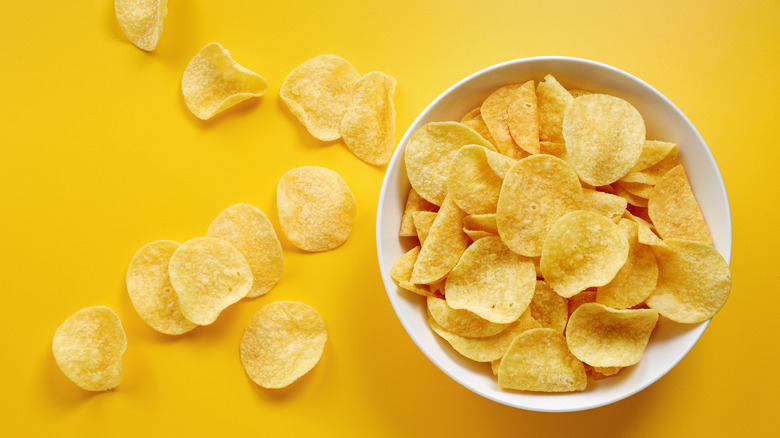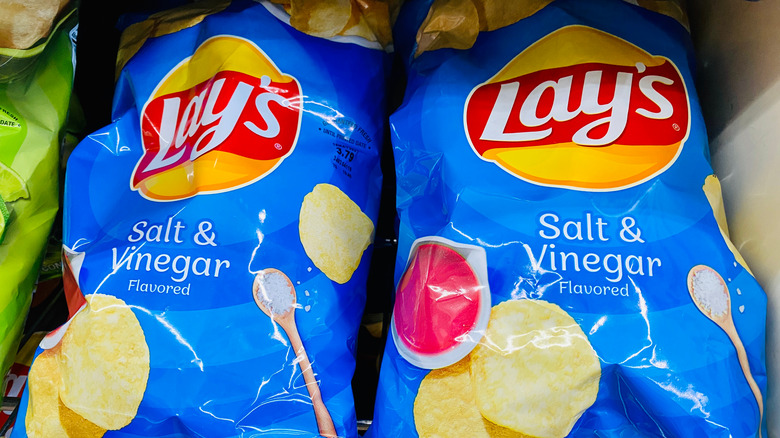The Reason Some Salt And Vinegar Chip Brands Are More Acidic
The nose-crinkling tang of salt and vinegar chips has been a fan-favorite for decades. In 2020, it ranked as the fourth most popular flavor of potato chip, trailing only sour cream and onion, barbecue, and the best-seller, which was the good ol' plain style (via Statista). It's nice to see people keeping it simple, even in the age of the Lay's Do Us a Flavor contest, which has brought us such mind-bending chip flavors like fried green tomato and crispy taco.
Even though salt and vinegar may seem like an old-timer's favorite, the very concept of flavored potato chips is relatively new. According to The Guardian, the original flavored potato chips were unveiled by the charmingly-named Irish snack company Tayto in the late 1950s. The very first offering was cheese and onion.
Sea salt and vinegar potato chips were invented in 1968 by a Canadian chemical engineer named Jim Connell, who was working for a lab in Bristol, England, at the time (via New York Times). Combining vinegar with potato crisps, as they're known in England, was a no-brainer, given the fact that malt vinegar is a wildly popular condiment for fish and chips.
However, creating the flavor was much more complicated than adding malt vinegar to potato chips — doing so would only create a soggy mess. Connell had to find a way to convert vinegar, a liquid condiment, into a dry seasoning blend.
There are multiple ways to make salt and vinegar seasoning
Vinegar is traditionally made by fermenting fruits, which give off an acetic acid, per Britannica. To create a dry vinegar seasoning, Connell told the New York Times that he converted malt vinegar into sodium acetate, which is the dry, sodium salt form of acetic acid. It is made through a reaction of sodium ions and acetate, an anion of acetic acid, according to the National Library of Medicine.
Most snack brands make their salt and vinegar chips using sodium acetate, or sodium diacetate, which is a blend of sodium acetate and pure acetic acid (via Serious Eats). Some other companies choose to spray liquid vinegar onto maltodextrin, a flavorless powder derived from starch, which absorbs the vinegar's flavor as it dries.
The acidity of your chips depends on what method the brand uses to make its flavoring. The most eye-watering varieties use a blend of sodium acetate along with other powdered acids, such as citric (from citrus fruit), malic (from apples), lactic (from milk), and fumaric (from lichen) to pack a multi-pronged punch.

